Leiden, UB, BPL 25
A compendium on dialectic1
This manuscript was written in the tenth century in France, probably in Brittany. It is a slim book with only 43 leaves and contains Boethius’ commentary on Aristotle’s De Interpretatione (f. 2-38) and Apuleius’ De Interpretatione (f. 38-41). The texts in this codex are core texts for the art of dialectic. In this book, they are not laid out to receive a commentary or glosses: the margins and interlinear spaces are relatively narrow and not prepared for extra lines of text or comments. Yet later hands did work with the text, underlining passages and marking them with notes and faces, drawing attention to their content. At the front and back of this manuscript are loose leaves, fragments from another time and place that once belonged to a different manuscript (fols. 1, 42 and 43). They can be dated to the second half of the ninth century. They contain chants from a Missal, their melodies written down with delicate neumes, the earliest form of musical notation.

http://hdl.handle.net/1887.1/item:1617684
Here on fols. 1v-2r we see the opening of Boethius’ translation of and commentary on Aristotle’s On interpretation (De interpretatione, Peri hermeneias) [link text portrait] on the right; on the left an earlier fragment of a missal with musical notation. The page on the right is quite dirty: a sign that the book may have been without a cover for some time, with this page exposed. We can also see that the dirt of the fragment on the left does not match the discoloration on the right: when they were put together in one binding, these two components were already dirty. Note, finally, that the sizes of the pages are slightly different.
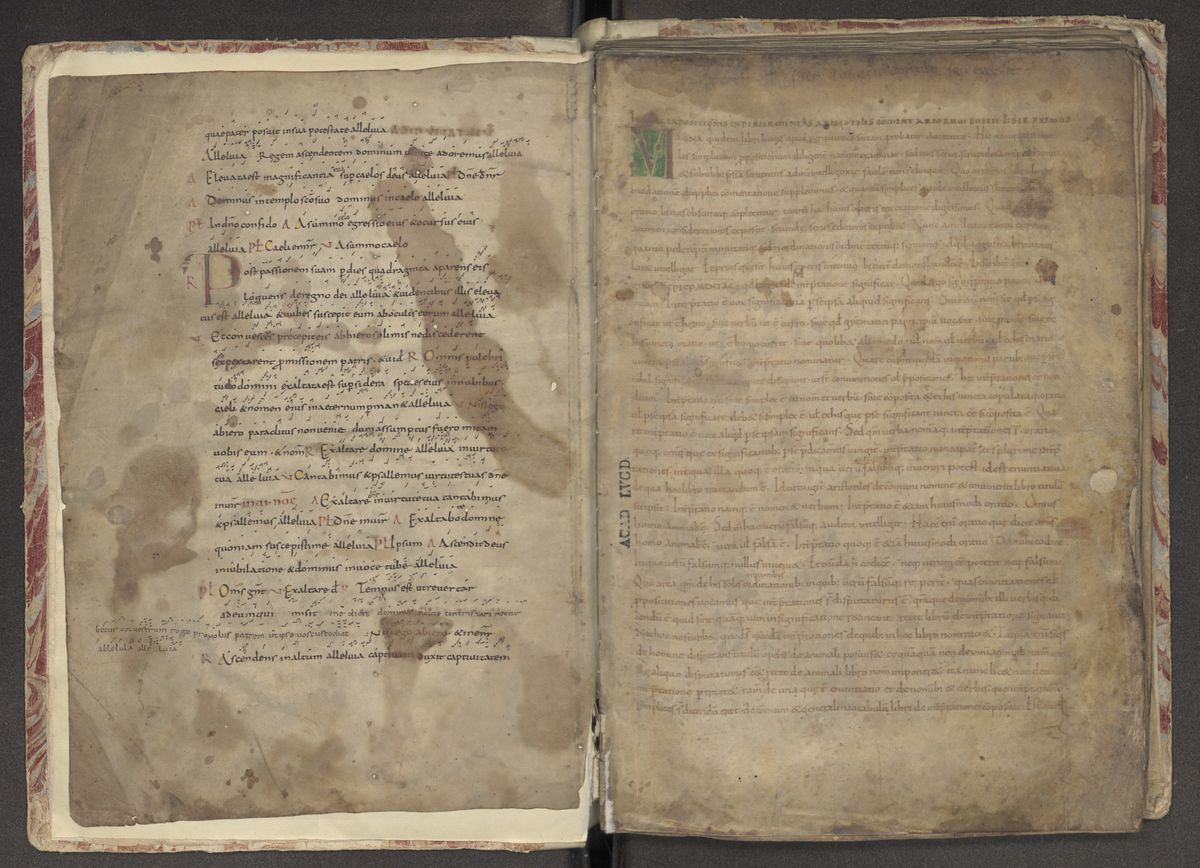

In close-up, the dirt, wear and tear are even more visible on the opening page of Boethius’ translation of and commentary on Aristotle. Now it is only just visible that a later hand wrote the title of the work at the top of the page (we added a green box around it): “Aristotelis liber i peri er[meneias] a boecio comentatus expositusque” (“The first book of Aritotle’s Peri hermeneias, commented upon and expounded by Boethius”). This remark repeats the title which is also on the page (in the first line). Perhaps it was written by the librarian who kept track of the items in the collection by adding the titles in every book at the same place. The Greek title of Aristotle’s work, Peri Hermeneias, is written in Greek capitals (we added a red box). A line over the words emphasizes the fact that it is Greek.
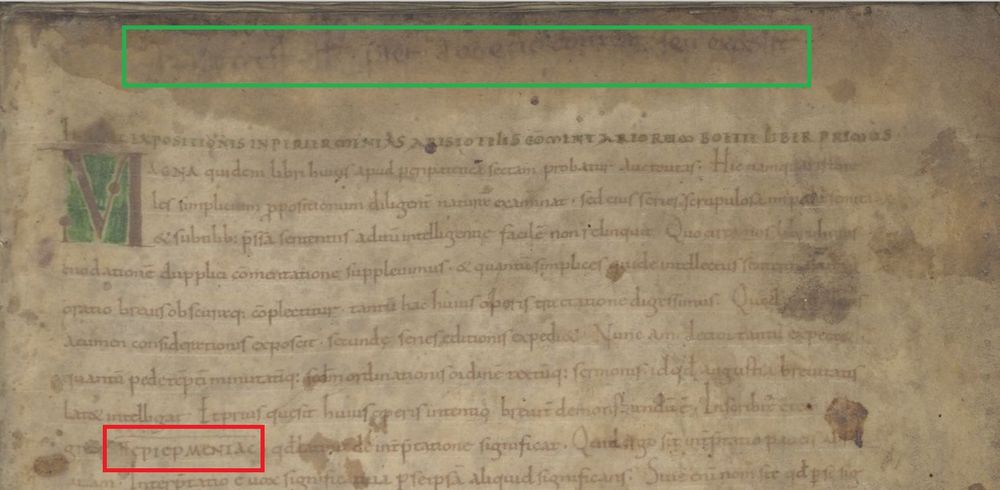

http://hdl.handle.net/1887.1/item:1617684
At the end of this manuscript there are two more pages of the missal with musical notation dated to the second half of the ninth century. Up close the detail and delicacy of the musical notation, the neumes, is clearly visible. The neumes give the contours of the melody: its rise and fall. It is, however, not precise enough to allow a full melodic reconstruction. Long melodies were fitted over the alleluias in the text (here marked with green boxes by us), as one can tell from the multitude of signs crowding the space above the words.
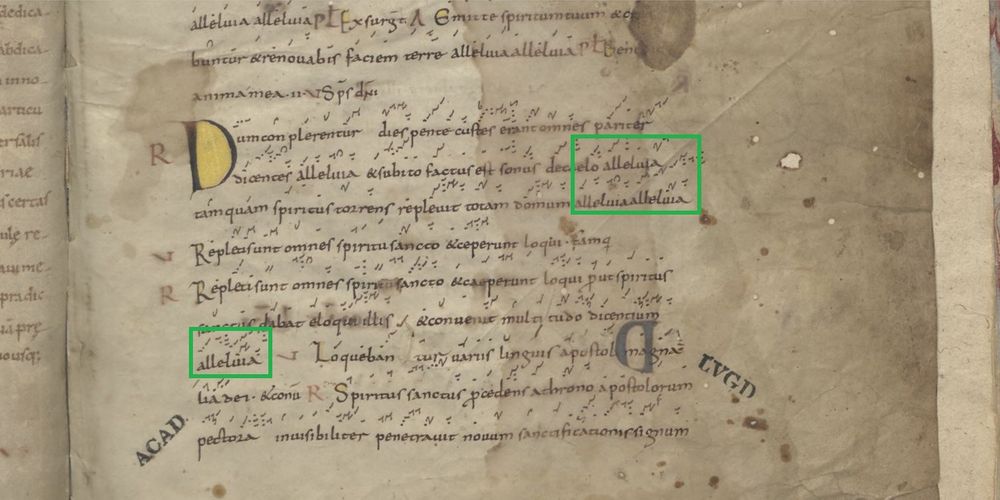

http://hdl.handle.net/1887.1/item:1617684
As we can see in this detail of fol. 2v, the translation and commentary of Boethius are set up as a dialogue, with a quote from Aristotle as the starting point for an explanation from Boethius. In order to make the structure of the text clear, S-shaped signs in the margin mark the lines that are quotes from Aristotle. These s-shaped-signs were commonly used to indicate quotes. A later hand also underlined the quote to make it even more apparent.
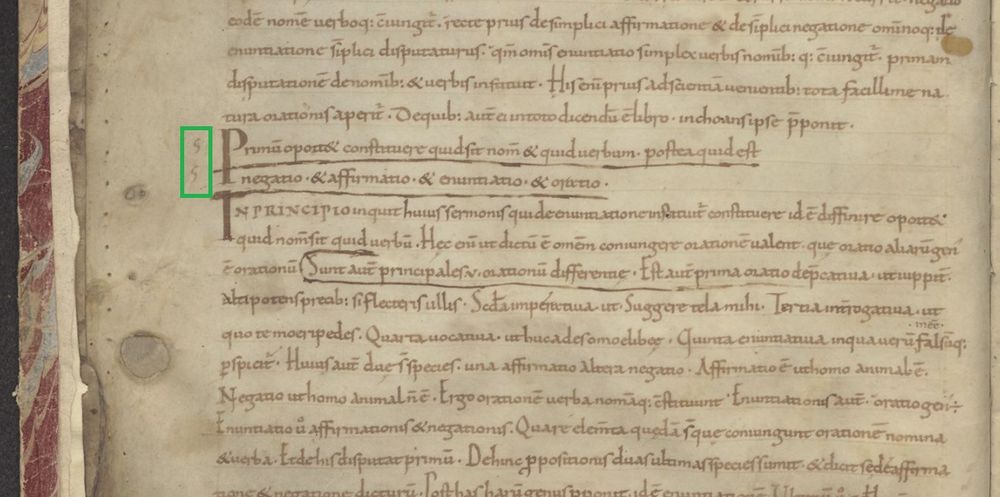

http://hdl.handle.net/1887.1/item:1617684
In this close-up (f. 6v) we can see how the text has been structured as a dialogue between Aristotle, here indicated with the label ‘HYSTORIA’, and BOETHIUS (here marked in green). The words of Aristotle are further marked in the margin with ‘PRIN’[CIPIUM or –CIPALIS, beginning or original], and with S-signs to mark a quotation (here marked in red). Finally, the later hand that added some notes, also added faces to mark the places that he found noteworthy for some reason (here marked in yellow).


http://hdl.handle.net/1887.1/item:1617684
On fol. 7r, a bad spot and tear in the parchment did not stop the scribes to use it for their copying activity: they just wrote around it. Note how the tear was carefully stitched together to prevent further damage: you can still see the thin threads holding the edges together.

http://hdl.handle.net/1887.1/item:1617684
On fol. 7v, we see a set-up of two faces that link the note in the margin to the correct place in the text. Note that one of the faces (the one close to the text), is drawn with a different ink than the other (the one preceding the marginal note). It seems that two readers, from two different times, used the faces. The earlier one used them as a nota sign, pointing to points of interest; the later one picked up the face and used it as a tie-mark, connecting the marginal note to the correct place in the text.
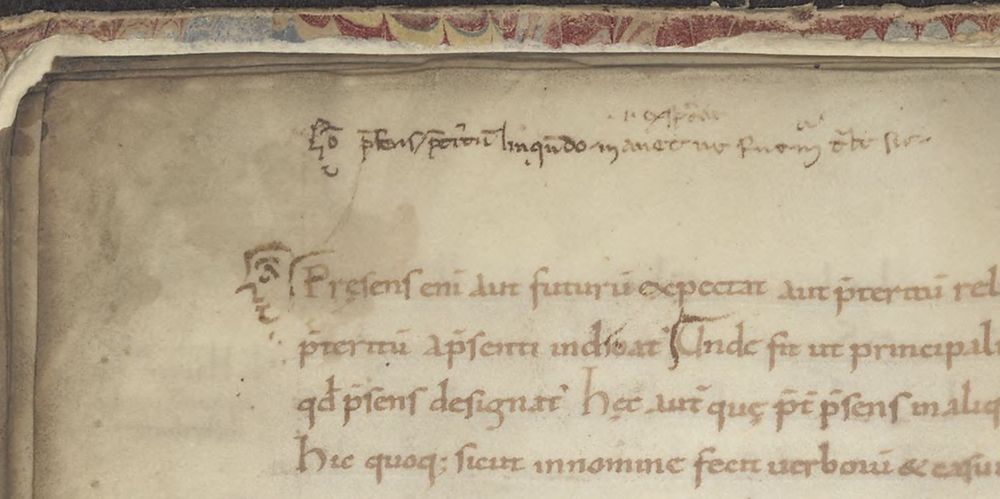
http://hdl.handle.net/1887.1/item:1617684
On fol. 12v we find a classic ‘square of opposition’. It illustrates relations between statements: on top there is a general affirmation (AFFIRMATIO UNIVERSALIS) versus a general negation (NEGATIO UNIVERSALIS). On the bottom there are particular statements: a particular affirmation (AFFIRMATIO PARTICULARIS) versus a particular negation (NEGATIO PARTICULARIS). The diagonal lines point out the contradictory statements.
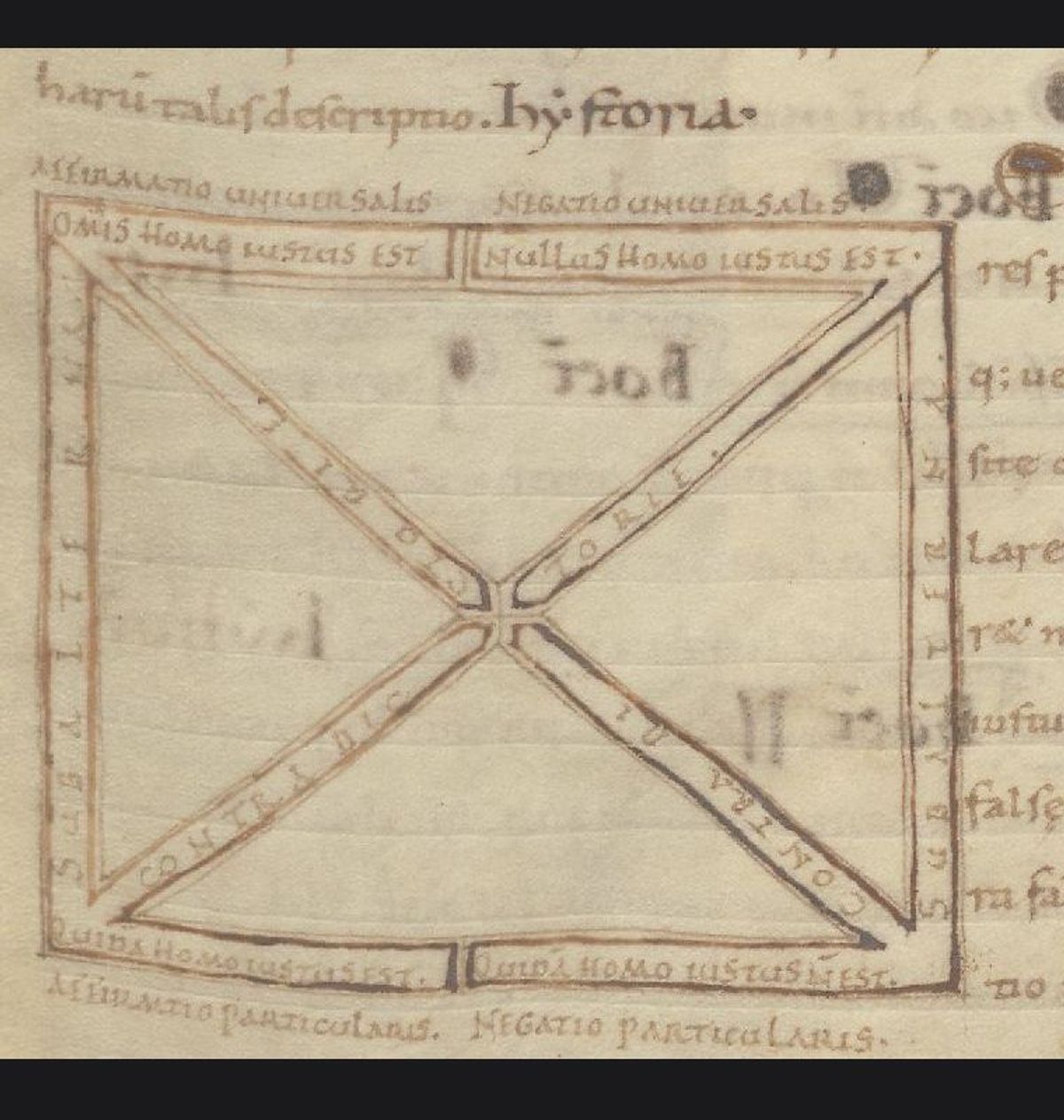

Similar schemes with affirmations versus negations and with resulting contradictions are found in the margins, for example here in the lower and upper margins of fols. 30v-32r.

http://hdl.handle.net/1887.1/item:1617684
Sources used for this contribution:
- description and bibliography on Leiden, Digital Special Collections website: http://hdl.handle.net/1887.1/item:1617684
- J. Peter Gumbert, Illustrated Inventory of Medieval Manuscripts, Vol. 2: Leiden, Universiteitsbibliotheek, BPL, Hilversum: Verloren, 2009, 01065-01066
Contribution by Mariken Teeuwen.
Cite as, Mariken Teeuwen, “Leiden, UB, BPL 25”, The art of reasoning in medieval manuscripts (Dec 2020), https://art-of-reasoning.huygens.knaw.nl/bpl25. ↑


